Build a Bee House
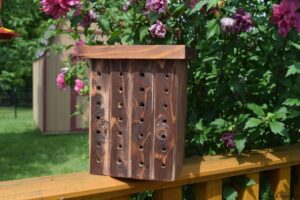
Building this Bee House is a Super Easy project.
Over the years, I’ve built plenty of birdhouses and feeders, but this Bee House (or Bee Hotel) project was a refreshing change. Unlike the typical hive structure most associate with bees, this design caters to solitary bee species like Mason bees and Leafcutter bees, which are critical pollinators but don’t live in hives. These bees prefer nesting alone, often burrowing into wood or hollow stems, making a bee house like this one the perfect shelter for them.
While honeybees live communally in hives, solitary bees, which make up the majority of bee species, are even more efficient pollinators, contributing significantly to garden health and biodiversity. Mason bees, for instance, are incredible early-spring pollinators, while Leafcutters are active during the summer months. Both species play essential roles in pollinating flowers, fruits, and vegetables, making a bee house a valuable addition to any backyard ecosystem.
The design I used came from the book Birdhouses & More by A.J. Hamler, a fantastic resource that offers straightforward and beginner-friendly plans. This Bee House was constructed from scrap pine and cedar, making it both sustainable and cost-effective. The assembly process is simple, involving a series of drilled holes in wood blocks, which mimic the natural nesting sites solitary bees seek out.
Not only does building a bee house provide a home for these beneficial insects, but it also contributes to the larger environmental movement of supporting declining bee populations. Solitary bees are non-aggressive and pose little threat, making them ideal guests in your backyard, especially if you’re looking to enhance your garden’s productivity. This project is quick, easy, and perfect for anyone interested in supporting biodiversity in their own backyard.
If you make one of these be sure to post a picture of it over on the WoodLogger Facebook Page. I’d love to see how yours turns out.
Featured Video
Material List
- (1) 2″ x 6″ x 6′ – pine (or any softwood)
- (1) 1″ x 6″ x 4′ – cedar (You’ll only need a small board for this)
Milling & Assembly
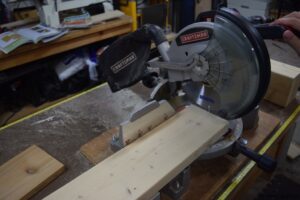 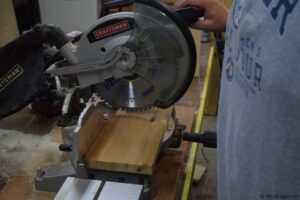 | To get started on building the Bee House. I cut (4) 2 x 6 Pine boards to a length of 8″. Next I cut the roof to a length of 7″. This allows for an overhang of a 1/2″ on both sides. I chose to make my house with four boards across, but you can easily add or subtract more boards to meet your needs. Be sure to adjust your roof to the size you decide on. If you want a set of plans be sure to check out the book I picked up at Amazon.com. |
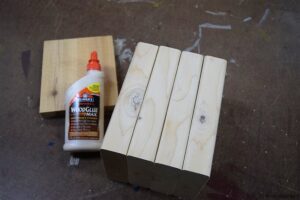 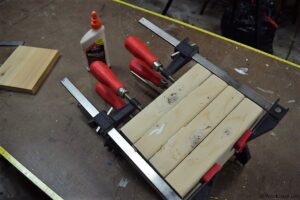 | Next up, I glued the four boards using an exterior rated glue. I used clamps to hold in it place until it was dry. |
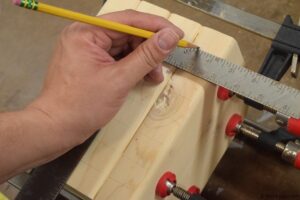 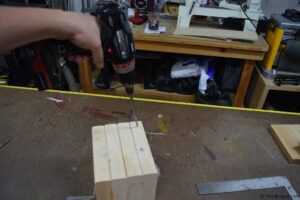 | Before drilling holes into the boards I drew a grid across all of the boards so that I could space out the holes one inch apart. Solitary bees like different size holes depending on the species. To accommodate this I drilled two different size holes. I used 1/4″ and 5/16″ spade bits and staggered them across my boards. |
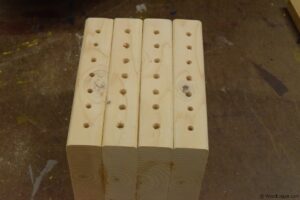 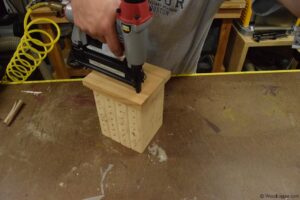 | Next up I attached the roof to the house using brad nails. The roof is for aesthetics and also helps protect the house from the elements. |
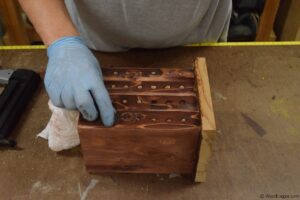 | I decided to stain my house and seal it. This is an optional step, but sealing it will help the house hold up longer. |
My bee house for carpenter bees is called a Carpenter Bee TRAP. :-)
Agree !!
Could use screws instead of glue huh?
how deep did you drill your holes?
Length of drill bit.
Try drill holes at different sizes! I have a beehouse in my garden. The wholes have different diameters. Varying between 2 and 6 mm. Some sizes are used al lot, others are not. Mason bee’s seem to be very particular with the size, they only use the 3mm wholes.